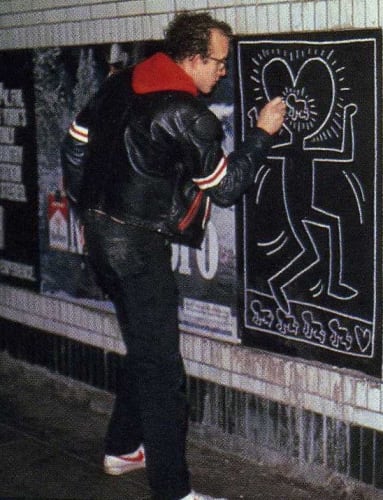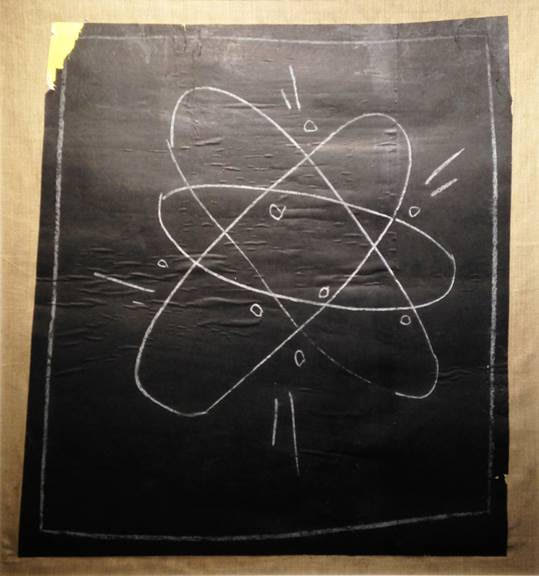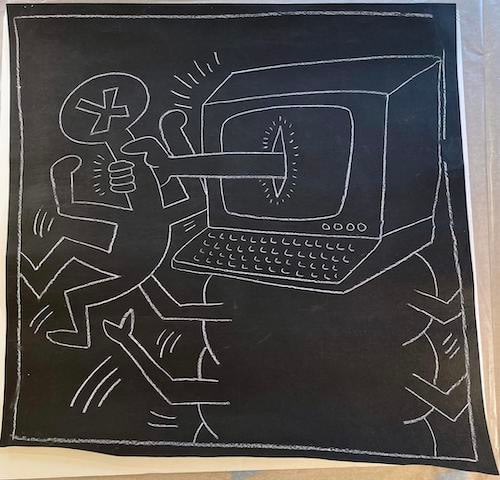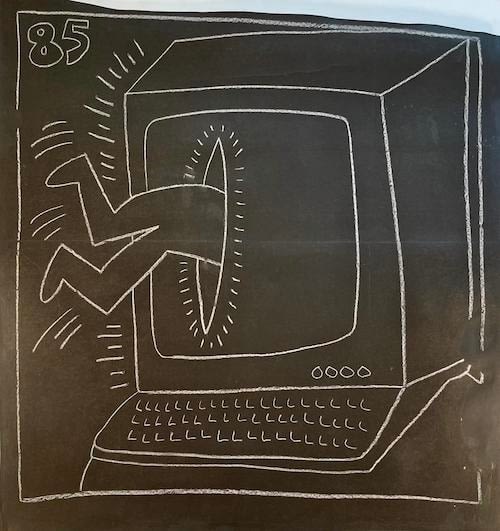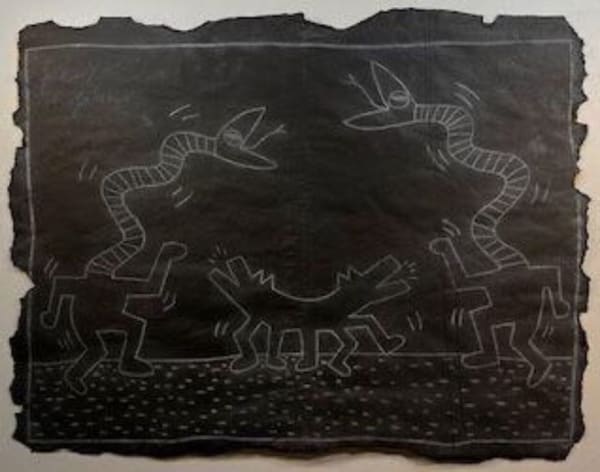The New York City subway stations served as both a sanctuary and a canvas for the renowned pop artist Keith Haring. Transforming the vacant advertising spaces scattered throughout the subways into his personal gallery, Haring embarked on a mission to tag as many of these empty spaces as possible. With each subway stop, he would eagerly seek out the nearest unclaimed area, swiftly creating images that captivated the attention of passersby. Despite the ephemeral nature of these subway artworks, their impact on observers endured. Within the lines and colors, Haring subtly embedded references to the political movements and issues that defined the tumultuous 1980s.
Among the myriad of figures that emerged, Radiant Baby and the Barking Dog stood out as Haring's most recognizable and iconic creations, making their debut within the subways. These characters would become integral to Haring's artistic repertoire, persisting throughout his career. The urgency conveyed in the subway drawings underscored the significance of the issues he addressed, garnering a substantial following and propelling Haring into both the local and global art scenes. This period marked a pivotal juncture in Haring's artistic journey, shaping the trajectory of his future work.
While Haring explored new materials in his later career, he retained a steadfast connection to his beginnings, consistently featuring signature figures like the radiant baby, barking dog, and human form in his pieces. These elements became emblematic of his artistic identity, maintaining a constant presence across his evolving body of work.
Having achieved considerable success through his subway drawings, Keith Haring leveraged his platform to address pressing issues of the 1980s, notably the AIDS epidemic. In 1986, he established the Pop Shop in New York, aiming to make his art accessible to a broader audience. The Pop Shop provided an avenue for everyone to acquire merchandise adorned with Haring's distinctive designs. Haring's innovative use of resources, such as empty advertising space and chalk, has left an indelible mark on contemporary street artists, influencing notable figures like Banksy and Herr Nilsson.
January 23, 2024
